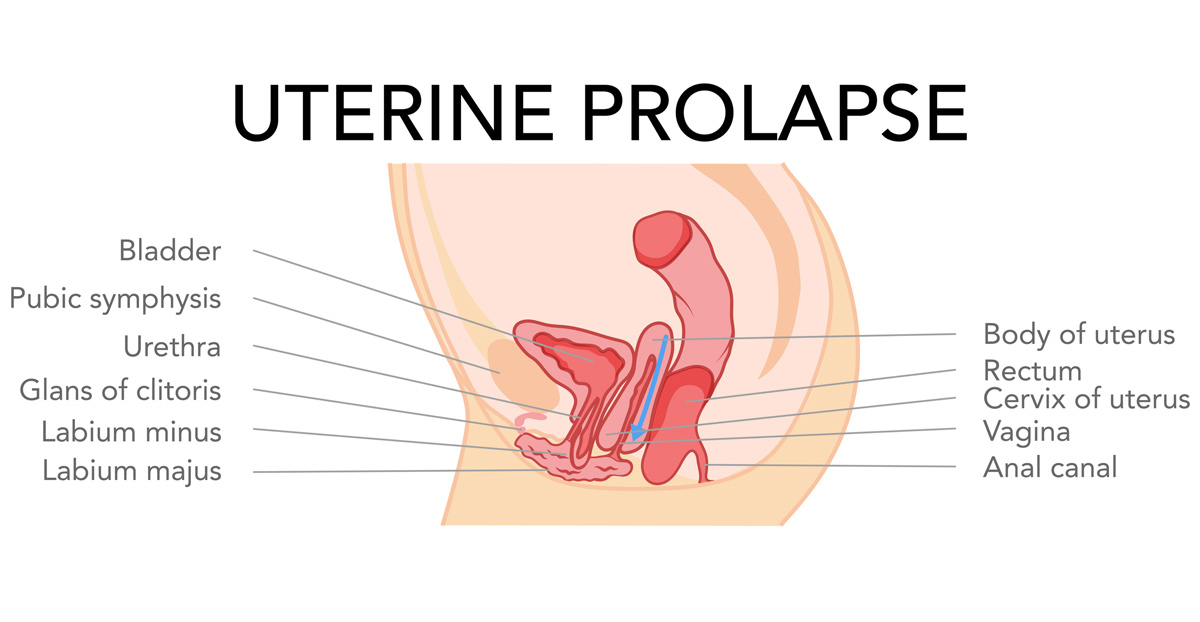

Pelvic organ prolapse is when the muscles and tissue supporting a woman’s pelvic organs weaken, causing them to fall lower in the pelvis and create a bulge in the vagina. The pelvic organs include the uterus, bladder, vagina, urethra, and rectum. The muscles holding these organs in place are called the pelvic floor.
A few different types of pelvic organ prolapse are cystocele, enterocele, rectocele, uterine prolapse, and vaginal vault prolapse. Pelvic organ prolapse repair may be done through surgical and nonsurgical methods.
Nonsurgical Pelvic Organ Prolapse
A vaginal pessary may be inserted into the vagina to support the pelvic organs. Other options include:
- Lifestyle and diet changes, such as limiting fluid intake and eating more fiber
- Medication to soften stool
- Weight loss in women who are overweight
- Kegel exercises to strengthen the pelvic floor

Who Should Undergo Surgical Pelvic Organ Prolapse Repair?
To determine if a patient is a good candidate for pelvic organ prolapse surgery, the following factors should be considered:
- Symptom severity
- Age. Younger patients face a risk of recurrent prolapse and the need for more treatment. For older patients, their overall health and history of surgery will determine the type of surgery that is performed.
- Childbearing. Patients who would like to become pregnant in the future should generally avoid surgery until their family is complete.
- Health conditions. Patients with heart disease, diabetes, difficulty breathing, and a smoking habit facing additional risks.
Pelvic Organ Prolapse Repair: Surgery Options
Patients may undergo obliterative or reconstructive surgery.
During obliterative surgery, the vagina is narrowed or closed to provide support for prolapsed organs. Patients cannot have sexual intercourse after surgery. The procedure is highly successful and a good option for individuals who don’t want to have sex in the future.
Reconstructive surgery restores organs to their original position. The procedure may be done laparoscopically, through an incision in the vagina, or through an abdominal incision.
The different types of reconstructive surgery are:
- Colporrhaphy. Stitches strengthen the vagina, so that the organ can support the bladder or rectum. Surgery is done through the vagina to treat prolapse of the front and back wall of the vagina.
- Sacrospinous fixation or uterosacral ligament suspension. The patient’s own tissue is used to treat uterine or vaginal vault prolapse. Surgery is done through an incision in the vagina. The surgeon stitches the prolapsed part to a ligament or muscle in the pelvis.
- Sacrocolpopexy. The surgeon attaches surgical mesh to the front and back walls of the vagina and then to the tailbone to lift the vagina back into place.
- Sacrohysteropexy. The surgeon attaches surgical mesh to the cervix and then to the sacrum to lift the uterus back into place.
- Vaginal mesh. Surgery that involves vaginal mesh may be done to treat women with recurrent anterior prolapse or patients who cannot undergo surgery done through an abdominal incision.
It’s important to consider the benefits and risks of each type of surgery before making a decision. Patients should speak to their doctor to determine which approach is best for their condition.
